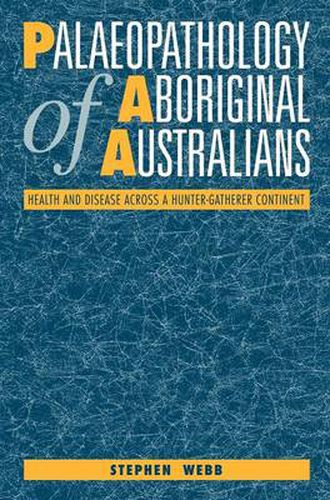Readings Newsletter
Become a Readings Member to make your shopping experience even easier.
Sign in or sign up for free!
You’re not far away from qualifying for FREE standard shipping within Australia
You’ve qualified for FREE standard shipping within Australia
The cart is loading…






While their health has suffered enormously because of the arrival of the Europeans, it is assumed that Aboriginal people enjoyed good health before 1788. Using data collected from all parts of the continent, this book studies the health of Australia’s original inhabitants over 50,000 years. It represents the first continental survey of its kind and is the first to quantify and describe key aspects of Australian hunter-gatherer health. The book takes a theoretical approach to Upper Pleistocene regional epidemiology and presents empirical data of the health of late Pleistocene and Holocene populations. Major categories of disease described are: stress, osteoarthritis, fractures, congenital deformations, neoplasms and non-specific and treponemal infections. The author also describes surgical techniques used by Aboriginal people. Offering fresh insight into the study of Australian prehistory and Aboriginal culture, this book will be accessible to specialists and general readers alike. It illuminates the origins of human disease, and will fill a gap in our knowledge of health in the Australasian region.
$9.00 standard shipping within Australia
FREE standard shipping within Australia for orders over $100.00
Express & International shipping calculated at checkout
While their health has suffered enormously because of the arrival of the Europeans, it is assumed that Aboriginal people enjoyed good health before 1788. Using data collected from all parts of the continent, this book studies the health of Australia’s original inhabitants over 50,000 years. It represents the first continental survey of its kind and is the first to quantify and describe key aspects of Australian hunter-gatherer health. The book takes a theoretical approach to Upper Pleistocene regional epidemiology and presents empirical data of the health of late Pleistocene and Holocene populations. Major categories of disease described are: stress, osteoarthritis, fractures, congenital deformations, neoplasms and non-specific and treponemal infections. The author also describes surgical techniques used by Aboriginal people. Offering fresh insight into the study of Australian prehistory and Aboriginal culture, this book will be accessible to specialists and general readers alike. It illuminates the origins of human disease, and will fill a gap in our knowledge of health in the Australasian region.